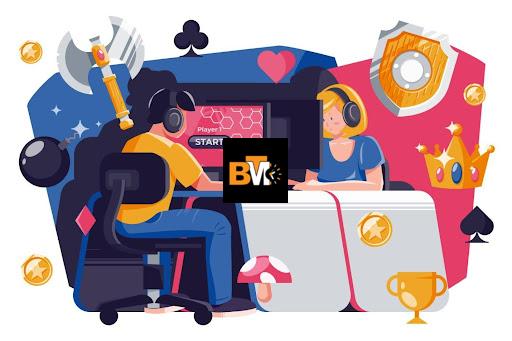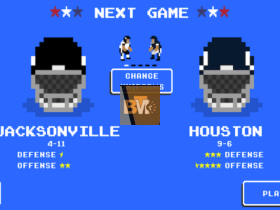ThThe modern gaming industry is more expansive than ever before. Each year, blockbuster releases vie for global attention alongside creative indie projects, while established developers and fledgling studios look for fresh ways to captivate a vast, diverse player base. At the same time, technological advancements have accelerated the pace of change, fueling bigger worlds, more sophisticated storytelling, and increasingly social gameplay experiences. Amid this vibrant and fast-moving landscape, the concept of a “Game Hub” has emerged as a unifying solution—an all-in-one platform where gamers can access, manage, and explore a wide range of titles, communities, and resources. This article examines how the Game Hub concept is shaping contemporary gaming, how it benefits both creators and players, and what the future may hold for these centralized digital environments.
Bringing the Gaming Ecosystem Under One Roof
In past decades, game collections were typically scattered. A gamer might install titles on their personal computer, swap disks for console play, and lose track of older games in the process. With the dawn of digital distribution, however, users found themselves collecting games across various libraries or subscription services—steamrolling convenience, but also introducing new layers of complexity. Gamers had to juggle multiple launchers, locate updates, and remember which platform hosted which titles.
A Game Hub removes much of this confusion by serving as a centralized command center. Rather than bouncing between interfaces, users can browse, install, and launch games from one primary location. The interface often provides additional functions, such as a built-in friends list or chat feature that spans all of their titles, regardless of developer or publisher. This kind of streamlined setup is particularly appealing in an age where gamers value quick access and consistent experiences.
Key Features of a Modern Game Hub
- Unified Library Management
The primary appeal of a Game Hub is the ability to consolidate your library. Whether you own dozens of titles or hundreds, you can see them all on one screen, conveniently organized with filter and sort tools. When everything is grouped in one place, it becomes much easier to see what you already have, track which updates are pending, or revisit old favorites. - Seamless Purchasing and Downloading
Most hubs provide a dedicated storefront for new releases, expansions, and in-game content. With a single login and payment profile, purchasing additional titles or downloadable content takes only a few clicks. Automatic downloads and updates further enhance convenience. Even if certain games originate from third-party publishers, the hub’s interface remains the primary gateway to the user’s purchases. - Community Tools and Communication
A hallmark of modern gaming is robust social interaction. Game Hubs typically offer built-in forums, friend lists, group messaging options, and party invites for cooperative sessions. By focusing on cross-game communication tools, hubs help unify a player’s network of friends and acquaintances across multiple titles. - Cloud Saves and Cross-Platform Access
Cloud storage of saved games has become an essential feature. If a gamer switches between a desktop and laptop, or between console and PC, cloud synchronization ensures that progress is never lost. Some advanced hubs also strive for cross-platform harmony, letting players continue their journeys on various devices without losing data or achievements.
Why the Game Hub Model Thrives
Gaming as a medium continues to expand in complexity, and players have steadily come to expect convenience and consistency. A well-implemented Game Hub tackles both demands. Not only can it reduce the workload on gamers who might otherwise maintain separate profiles, passwords, and game directories, but it can also help developers reach new audiences. Smaller studios can display their work in storefronts that cater to millions of potential customers, and players benefit from the discovery of lesser-known gems.
Additionally, the gaming industry thrives on networking and social experiences. Traditional matchmaking systems are useful, but a hub that centralizes these features streamlines everything. Gamers no longer have to rely on external messaging apps or social media groups to coordinate sessions, as direct invitations and chat functions exist within the same ecosystem.
The Impact of Player Engagement and Feedback
For developers, understanding player behavior within a centralized environment offers big advantages. Analytics gathered from a hub can highlight which titles are performing well, where users spend most of their time, and what improvements they crave. Instant feedback mechanisms—such as user reviews or sentiment ratings—provide actionable insights that help studios rapidly respond to gameplay, performance, or balance concerns. Consequently, the community’s voice is amplified, as user feedback can reach developers more efficiently.

From a player’s perspective, these feedback loops foster a sense of belonging and influence. Instead of posting on scattered forums or social media platforms, players can interact directly with official channels hosted in the hub. This connectedness often results in quicker bug fixes, richer expansions, or special events that cater to specific audience interests.
Evolving Technologies and the Future of Game Hubs
As game streaming services gain traction and virtual reality (VR) continues to mature, the potential for an even more integrated Game Hub experience grows. In theory, users might browse VR-ready titles in a 3D storefront, demo them instantly via cloud streaming, and invite friends to a shared lobby—all from within a unified interface. These emerging technologies also introduce opportunities for dynamic crossovers, such as game tie-ins, interactive live events, and subscription packages that bundle multiple experiences under one umbrella.
Furthermore, artificial intelligence could automate certain hub tasks. Personalized recommendations might go beyond typical “if you like this, you might like that” logic, drawing instead on detailed patterns of user interaction. As a result, the curated suggestions that populate user feeds would become increasingly sophisticated, highlighting not just popular releases but also niche titles that suit specific playstyles.
Conclusion
The Game Hub model represents an ambitious, multifaceted effort to simplify how we interact with modern gaming. By merging library management, social tools, purchasing, and real-time communication, these hubs create a cohesive environment that caters to a vast range of preferences and priorities. For passionate players, it’s an opportunity to keep up with new releases, manage sprawling libraries, and stay connected with friends—while developers get the benefit of concentrated visibility and immediate community feedback.
As user expectations and gaming capabilities continue to expand, the Game Hub concept will only become more prevalent and refined. To stay informed of the latest innovations, upcoming trends, and emerging possibilities in all corners of the interactive entertainment world, check out Game Hub for timely insights. Ultimately, as gaming continues to evolve in diverse and exciting ways, comprehensive hubs remain essential for keeping communities unified, informed, and ready to embark on their next digital adventure.



Leave a Reply